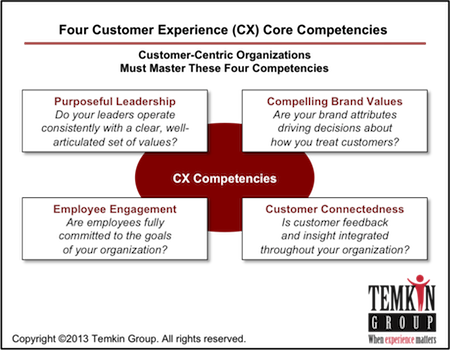Report: The Four Customer Experience Core Competencies
January 22, 2013 Leave a comment
This report has been updated, see our latest version
 Temkin Group just published an update to the report that defines one of our fundamental frameworks, The Four Customer Experience Core Competencies. This report lays out the building blocks for customer experience success. This topic is so important that we’re giving this report away for free. Here’s the executive summary:
Temkin Group just published an update to the report that defines one of our fundamental frameworks, The Four Customer Experience Core Competencies. This report lays out the building blocks for customer experience success. This topic is so important that we’re giving this report away for free. Here’s the executive summary:
Research shows that customer experience is highly correlated with loyalty. While any company can improve portions of its customer experience, it takes more than a few superficial changes to create lasting differentiation. Organizations that want to become customer experience leaders need to master four customer experience competencies: Purposeful Leadership, Employee Engagement, Compelling Brand Values, and Customer Connectedness. To gauge your progress, actively use Temkin Group’s Customer Experience Competency and Maturity Assessment. This assessment will identify areas of strength and weakness in your CX efforts as well as identify your progress along six stages of CX maturity: Ignore Explore, Mobilize, Operationalize, Align, and Embed.
Here’s how I describe the four CX Competencies:
The bottom line: It’s time to improve your CX competencies
